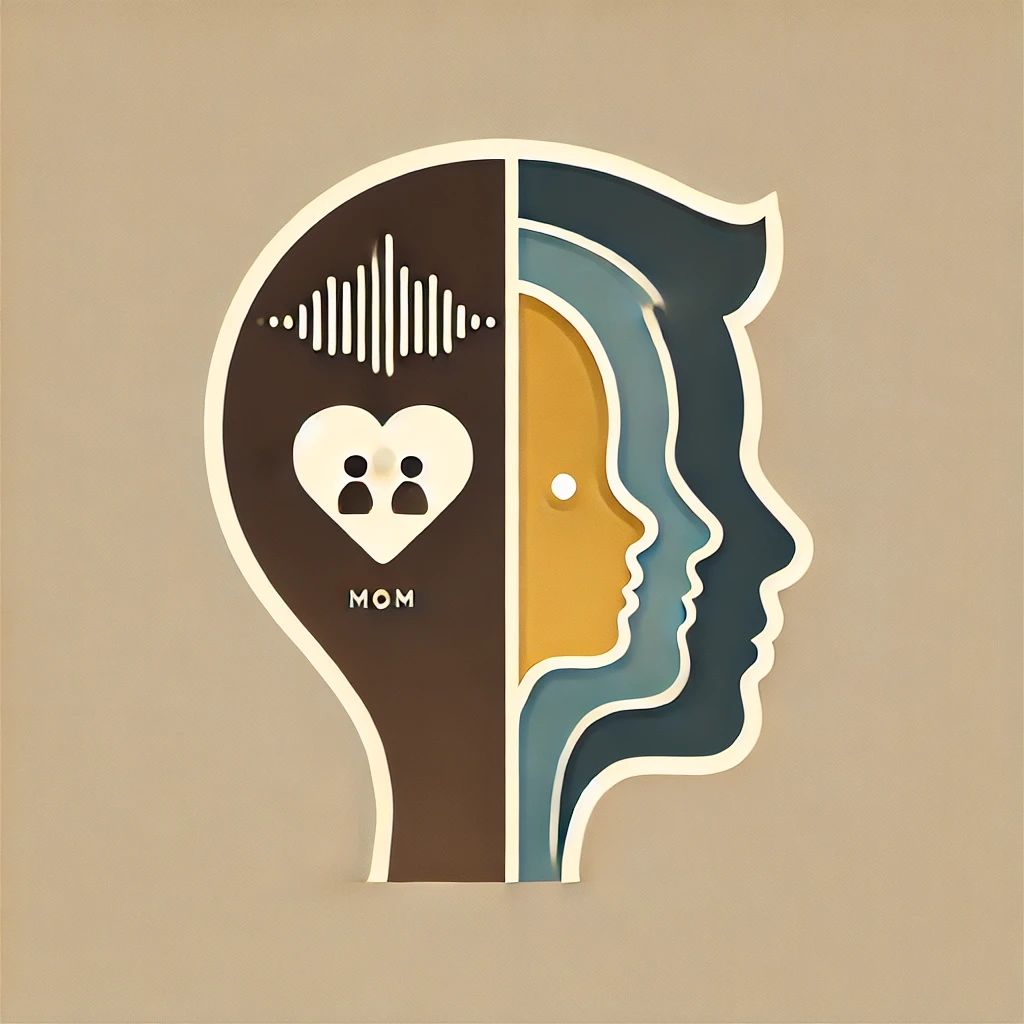
ChatGPT:
A Neurodevelopmental Shift in Reward Circuitry from Mother’s to Nonfamilial Voices in Adolescence
This study investigates how children’s brains transition from prioritizing their mother’s voice to responding more strongly to unfamiliar, nonfamilial voices during adolescence. Using fMRI on participants aged 7–16, researchers found that younger children’s reward and social valuation brain systems (nucleus accumbens and ventromedial prefrontal cortex) were more active for mother’s voice, while older adolescents showed the opposite—more activity for nonfamilial voices.
Conclusion
The research reveals a distinct neurodevelopmental shift in social orientation during adolescence. While children exhibit heightened neural responses to their mother’s voice in brain regions tied to reward and social value, adolescents respond more strongly to unfamiliar female voices. This change occurs around ages 13–14 and reflects a broader adaptive transition toward nonfamilial social engagement. Importantly, both mother’s and nonfamilial voices elicit increasing activation across the social brain as children mature, but only nonfamilial voices gain preference in key reward-processing areas over time. The findings align with developmental models that describe adolescence as a period of increased social exploration beyond the family unit, and they provide a neural template for studying social orientation changes in both typical and clinical populations, such as autism.
Key points
🧠 Shift in neural preference: Around ages 13–14, brain reward circuits switch from favoring mother’s voice to preferring unfamiliar female voices.
🔊 High voice recognition: Participants identified their mother’s voice with ~98% accuracy across ages.
🎯 Key brain regions: Nucleus accumbens and ventromedial prefrontal cortex drive this social orientation shift.
👂 Both voice types matter: Both maternal and nonfamilial voices show increased activation with age in social and salience networks.
📈 Adolescence as sensitive period: Data support the view that adolescence is marked by heightened responsiveness to social stimuli.
🧪 Controlled stimuli: Nonsense words ensured focus on vocal qualities, not meaning.
🚫 Not due to acoustics: Age-related brain differences weren’t explained by voice pitch or other acoustic features.
⚖ No sex effect: Males and females showed similar developmental patterns.
⏱ Faster responses with age: Reaction times in voice identification decreased as participants got older.
🔍 Clinical relevance: Findings offer a framework for studying social orientation in populations with social impairments.
Summary
- Research aim: The study examined how brain responses to familiar (mother’s) versus nonfamilial female voices change from childhood to adolescence, focusing on reward and social valuation circuits.
- Participants and setup: 46 neurotypical children and adolescents (ages 7–16) heard brief nonsense words spoken by their mother, two unfamiliar women, or environmental sounds while undergoing fMRI.
- Behavioral performance: Across all ages, participants recognized their mother’s voice with very high accuracy (~97.7%) and showed faster reaction times with age.
- Neural changes with age: Both voice types triggered increasing activity across the social brain (STS, AI, PCC) with age, but only nonfamilial voices showed growing engagement of the nucleus accumbens and ventromedial prefrontal cortex.
- Preference switch: In direct comparisons, younger children preferred mother’s voice in reward/social valuation regions, while older adolescents preferred nonfamilial voices—transition occurring around age 13–14.
- Control analyses: Voice acoustics, differences between the two nonfamilial voices, sex, and behavioral measures did not account for the neural effects.
- Robustness check: Machine learning confirmed neural activity patterns reliably predicted age, supporting the consistency of the findings.
- Theoretical fit: Results align with models describing adolescence as a shift from parental to peer-oriented social engagement and a sensitive period for social information processing.
- Biological salience: Mother’s voice remains a biologically meaningful signal in childhood, but adolescence brings novelty-driven reward responses toward unfamiliar social voices.
- Future implications: The neural template can help study developmental changes in social orientation for typical development and in disorders affecting social functioning, such as autism.
What is the main finding of the study?
The study shows that as children grow into adolescence, their brain’s reward and social valuation systems shift preference from their mother’s voice to unfamiliar, nonfamilial female voices. This transition occurs around ages 13–14.
Which brain regions are involved in this shift?
The nucleus accumbens (linked to reward processing) and the ventromedial prefrontal cortex (linked to social valuation) are the key regions showing this developmental change.
How was the study conducted?
Researchers used fMRI to measure brain activity in 46 participants aged 7–16 as they listened to brief nonsense words spoken by their mother, unfamiliar women, or environmental sounds.
Why were nonsense words used?
Nonsense words eliminated meaning, allowing the researchers to focus on the brain’s response to the sound qualities of the voices rather than language comprehension.
Did participants recognize their mother’s voice?
Yes. Across all ages, participants correctly identified their mother’s voice about 98% of the time.
Is the shift related to voice acoustics like pitch?
No. Analyses showed that differences in pitch and other acoustic features did not explain the observed age-related brain changes.
Are there differences between boys and girls in this shift?
No significant sex differences were found; both males and females showed similar developmental patterns.
Does this mean adolescents stop valuing their parents?
Not necessarily. The change reflects a normal developmental adaptation toward increased engagement with peers and nonfamilial social targets, not a loss of parental importance.
How does this relate to adolescent social behavior?
The findings support theories that adolescence is a sensitive period for developing social skills, with a natural shift toward seeking novel social interactions outside the family.
Can these findings help in clinical contexts?
Yes. The neural patterns identified could help understand and potentially address social orientation challenges in conditions like autism spectrum disorder.
